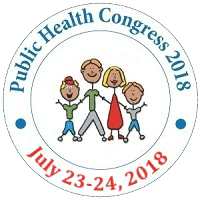
Mikal Finkelstein
CapraCare, Inc., USA
Title: using the see and treat approach to cervical cancer screening and prevention: A community led program in rural Hati
Biography
Biography: Mikal Finkelstein
Abstract
Cervical cancer has become a disease of the poor. In low resource settings such as Haiti, most women do not have access to preventive screenings such as Pap smears. Haiti, therefore, has among the highest incidence and death due to cervical cancer in the world. The “See and Treat” approach using Visual Inspection with Acetic Acid (VIA) has been successfully utilized in many developing countries to improve cervical cancer prevention. It is simple and cost effective and can be performed by nurses. Women can be treated the same day for precancerous lesions with cryotherapy or thermocoagulation.
Methods: The CapraCare clinic in Fonfrede is a community run facility in southern Haiti. The Greater Fonfrede area encompasses 160,000 people with little access to healthcare. This initiative included the training of local physicians and community health workers. Local staff conducted community outreach and cervical cancer education of the greater Fonfrede community. The “See and Treat” protocol led to the diagnosis, treatment and referral for precancerous and cancerous lesions in a population that would have previously not have had such access to care.
Results: Significant results include the education of community health workers, training local clinicians, and strengthening community partnerships. In addition, we created cervical cancer educational materials and a clinical training program. We performed community outreach in (n=1529) and monthly cervical cancer education sessions (n=295). Approximately half of those educated came in for the screening test. Clinical outcomes reflected those in the literature. Lessons were learned about community engagement, outreach and how implementation may influence screening utilization.
Conclusions:
Approaches such as ‘See and Treat” can have great impact on improving social disparities in health, however too few community-based programs that have been studied. Learning from this experience can help to expand such programs and lead to future implementation in other settings.

